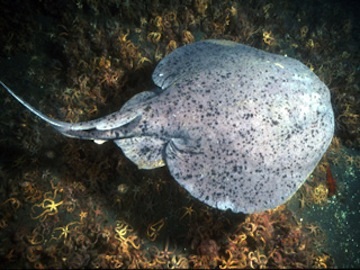371315-torpedo.jpg

Pacific electric ray, also know as a torpedo. Credit: National Oceanic and Atmospheric Administration
Treating a headache with a torpedo may sound like overkill, but that’s just what happened in ancient Greece and Rome. Of course, the torpedo wasn’t a projectile like that fired from modern submarines. Instead, it was a type of fish -- a ray that can deliver a powerful electric charge.
Torpedo rays are found in shallow coastal waters around the world. The Atlantic torpedo lives along the eastern and Gulf coasts of the United States, and the Pacific torpedo is found from Baja California to British Columbia.
Greek and Roman scientists knew about torpedo rays more than 2,000 years ago. They knew that touching a torpedo could produce numbness; in fact, the name “torpedo” comes from a Latin word that means “numb” or “paralyzed.” So physicians used the rays as a sort of anesthetic to numb headaches and other pains.
But they didn’t know how the rays delivered that numbness. Some thought the torpedoes produced a type of poison, while others thought the effect came from some mechanical means.
Today, we know the true source of their special powers: electricity. Torpedoes have groups of special muscle cells in their pectoral fins that produce an electric discharge. They deliver a powerful jolt -- up to 220 volts.
In the early 1800s, American inventor Robert Fulton was devising a new weapon to sink enemy ships -- a container of gunpowder towed behind a submarine. Perhaps thinking of the jolt delivered by certain rays, he named his weapon after them -- the birth of the torpedo as a weapon of war.

